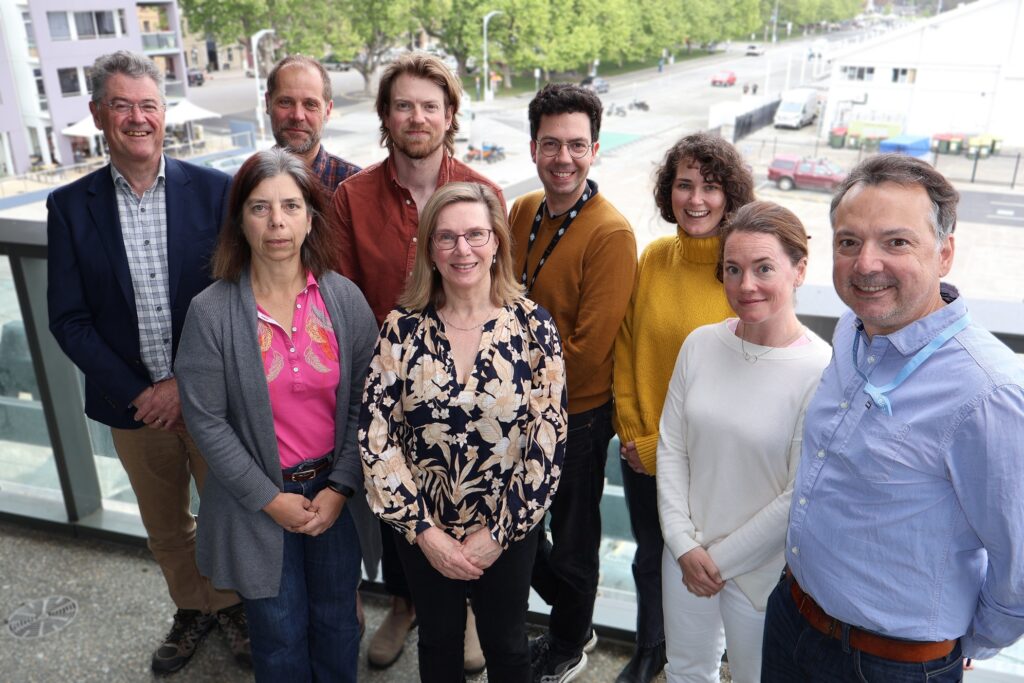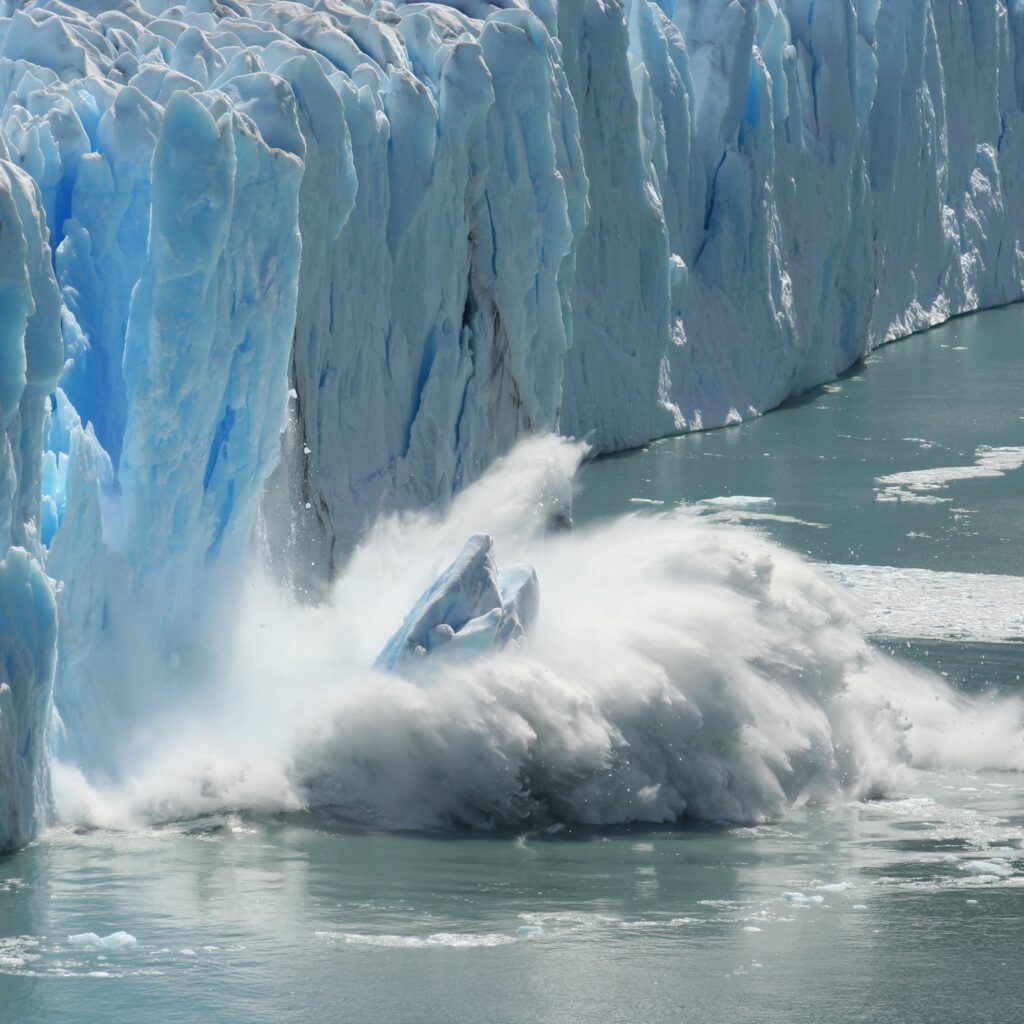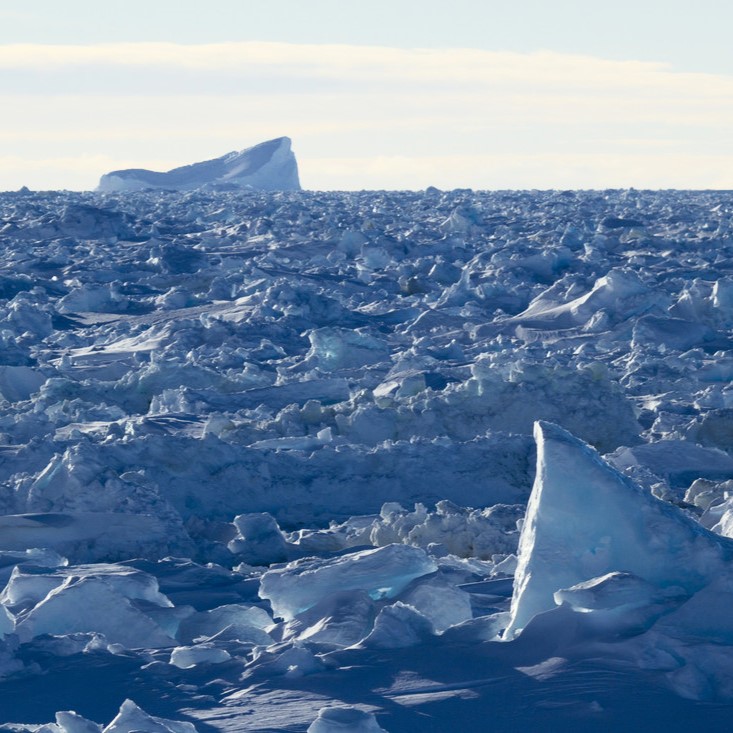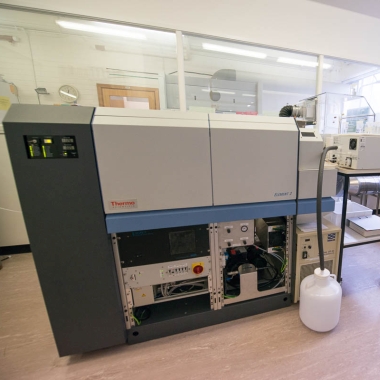AAPP scientists bring Antarctic focus to ARC funding
3 November 2023
Four key projects involving Australian Antarctic Program Partnership (AAPP) researchers at the University of Tasmania have been approved in the latest round of funding by the Australian Research Council (ARC).
ARC funding schemes for Discovery Projects and Linkage Infrastructure, Equipment and Facilities (LIEF) projects are highly competitive.
Discovery Project applications received $220.2 million for 421 research projects (16% success rate), with $28 million for 35 new research projects under the LIEF scheme (34% success rate).
AAPP physical oceanographer Assoc Prof Helen Phillips and her international team from Australia, the US and South Korea won the fifth highest funding nationally in this round, with the highest funded project in the Earth Sciences.
She is leading a project that will pinpoint how heat is transported across the Southern Ocean to melt ice shelves from beneath.

“We are so excited to be funded by the ARC to do this work,” said Assoc Prof Phillips.
“It will allow us to combine international field campaigns, theory and high-resolution models to track how strengthening winds in the Southern Ocean are accelerating heat transport toward Antarctica.”
“Ultimately, we aim to apply this new understanding to turn satellite maps of sea surface height into daily maps of heat movement toward Antarctica.”
“This will help governments and communities plan how to adapt to rising sea levels and how fast they need to act,” she said.
Other projects involving AAPP researchers will focus on Southern Ocean aerosols, wave and sea ice feedbacks, and a new mass spectrometer at UTAS.
Discovery Project:
Antarctica’s leaky defence to poleward heat transport, awarded $923,447
AAPP researchers: Assoc Prof Helen Phillips (Chief Investigator); Dr Annie Foppert; Prof Nathaniel Bindoff; Assoc Prof Paul Spence
Powerful ocean currents that encircle Antarctica isolate cold polar waters from warmer waters to the north and help keep the icy continent frozen. But in some places this barrier leaks and heat gets through. Undersea mountains and strong westerly winds disrupt the currents and create eddies. These energetic eddies transport heat across the barrier and closer to Antarctica. Changing winds are expected to accelerate heat transport, melting ice shelves that hold Antarctic glaciers back from contributing to sea level rise. This project will advance understanding of the small-scale processes that control heat transport across the Southern Ocean, by using new observations and ocean models.

Discovery Project:
Southern Ocean aerosols: sources, sinks and impact on cloud properties, awarded $511,100
Chief Investigator: Assoc Prof Branka Miljevic (Queensland University of Technology)
AAPP researchers: Dr Marc Mallet; Dr Sonya Fiddes; Dr Ruhi Humphries; Dr Alain Protat
Atmospheric processes over the Southern Ocean, like cloud formation, have a profound influence on regional and global climate. This is a part of the world where climate models perform particularly poorly. This project will address the greatest source of uncertainty in climate models — atmospheric aerosols and how they influence cloud formation. Comprehensive observations using state-of-the-art instrumentation during three Southern Ocean voyages on RV Investigator and RSV Nuyina, along with year-long land-based measurements, will enhance our knowledge of aerosols and cloud formation in this region. This will provide much-needed data for improving global climate models and enable more accurate seasonal and latitudinal representations of Southern Ocean aerosol populations, properties and sources. The main benefit includes improvements in weather forecasting and future climate projection for Australia and the Southern Hemisphere.

Discovery Project:
Linking wave–sea ice feedbacks to rapid ice retreat, awarded $384,217
Chief Investigator: Assoc Prof Luke Bennetts (University of Adelaide)
AAPP researchers: Dr Alexander Fraser; Dr Petra Heil
Antarctic sea ice extent has been in sharp decline since 2016, which is stressing the Southern Ocean and Antarctic environments so vital to the global climate. This project aims to investigate a crucial candidate mechanism of sea ice loss by predicting rapid ice retreat in response to large Southern Ocean waves. New theory and modelling capabilities that account for wave–ice feedbacks will underpin the predictions, leveraging on recent research breakthroughs, including novel datasets derived from satellite and field observations. The outcomes are expected to quantify sea ice retreat due to ocean waves for the first time, with potentially major implications for the next generation of coupled wave–sea ice modelling in climate studies.

Linkage Infrastructure, Equipment and Facilities (LIEF) project:
Advanced Mass Spectrometry facility for marine, Antarctic and environmental samples, awarded $470,000
AAPP researchers: Prof Andrew Bowie; Dr Klaus Meiners; Dr Elizabeth Shadwick
This project will establish a shared High Resolution Inductively Coupled Plasma Mass Spectrometry facility for Tasmanian researchers. The existing UTAS instrument is approaching end-of-life and is becoming increasingly unreliable. Access to enhanced capabilities embodied in a rejuvenated facility, along with a renewed lifespan, is essential for continued analysis of ultra-trace elements and isotopes in challenging samples from southern environments. The new instrument will allow TAS researchers and their (inter)national collaborators to undertake world-leading research, enhancing competitive profiles in a diverse range of research areas (oceanography, analytical chemistry, Antarctic studies, environmental assessment, geochemistry).
(right: existing High Resolution Inductively Coupled Plasma Mass Spectrometer at UTAS)




